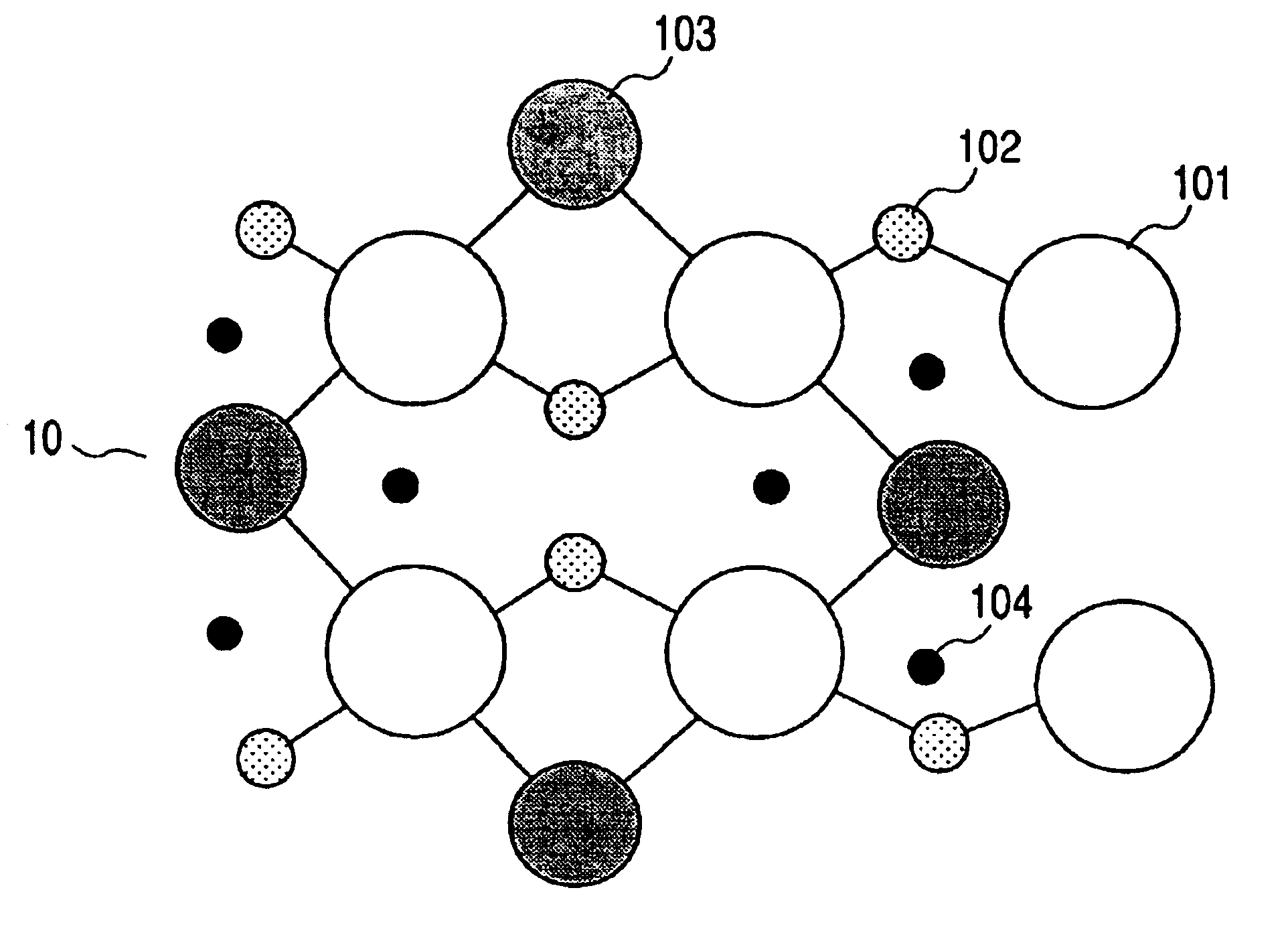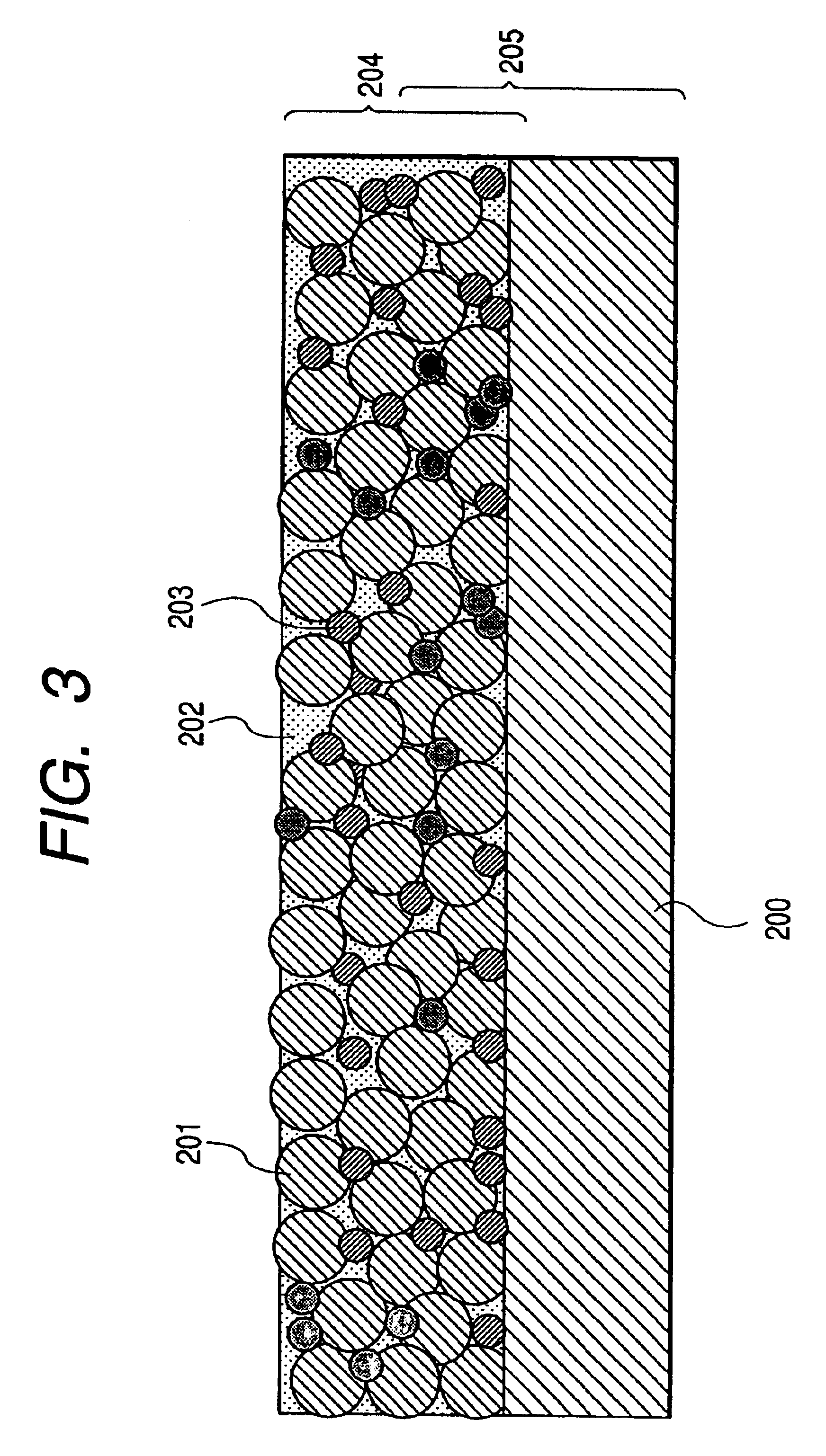Powder material, electrode structure, production processes thereof, and secondary lithium battery
a lithium battery and electrode structure technology, applied in secondary cells, sulfur compounds, secondary cells, etc., can solve the problems of long cycle life, difficult to meet the needs of users, and new construction of thermal power plants, and achieve high capacity and charging and discharging efficiency
- Summary
- Abstract
- Description
- Claims
- Application Information
AI Technical Summary
Benefits of technology
Problems solved by technology
Method used
Image
Examples
example 1
[0105]In this example, a secondary lithium battery having a sectional structure illustrated in FIG. 6 was fabricated. Natural graphite was used for a negative electrode, while a powder materiel comprised mainly of a lithium-cobalt.oxygen.sulfur compound prepared by the following process according to the present invention was used for a positive electrode. The preparation procedure of individual components of the battery and the assembly of the battery will hereinafter be described with respect to FIG. 6.
(1) Preparation of Positive Electrode 503:
[0106]Ten parts of cobalt oxyhydroxide, 4 parts of thioacetamide and 100 parts of lithium hydroxide were added to 100 parts of water, and the mixture was thoroughly stirred. The mixture was placed in a pressure vessel which can be closed, and compressed air was injected into the vessel until the pressure within the pressure vessel reached 8 kg / cm2 to close the vessel. The pressure vessel was then placed in a thermostatic chamber controlled at...
example 2
[0117]In this example, a secondary lithium battery having the sectional structure illustrated in FIG. 6 was fabricated in the same manner as in Example 1 except that a powder material and a positive electrode prepared in a manner described below were used, and its performance evaluation was conducted likewise.
Preparation of Positive Electrode 503:
[0118]Ten parts of nickel sulfide and 100 parts of lithium hydroxide were ground and stirred in a planetary ball mill, and the mixture was added to 100 parts of water and thoroughly stirred. The mixture was placed in a pressure vessel which can be closed, and compressed oxygen was injected into the vessel until the pressure within the pressure vessel reached 8 kg / cm2 to close the vessel. The pressure vessel was then placed in a thermostatic chamber controlled at 160° C. and continuously heated for 48 hours. Thereafter, the contents were taken out of the pressure vessel, washed with water, vacuum dried at 100° C., calcined at 300° C. for 20 ...
example 3
[0124]In this example, a secondary lithium battery having the sectional structure illustrated in FIG. 6 was fabricated in the same manner as in Example 1 except that a powder material and a positive electrode prepared in a manner described below were used, and its performance evaluation was conducted likewise.
Preparation of Positive Electrode 503:
[0125]Ten parts of nickel oxyhydroxide, 12 parts of thioacetamide and 50 parts of lithium hydroxide were added to 50 parts of water, and the mixture was thoroughly stirred. The mixture was placed in a pressure vessel which can be closed, and compressed nitrogen was injected into the vessel until the pressure within the pressure vessel reached 70 kg / cm2 to close the vessel. The pressure vessel was then placed in a thermostatic chamber controlled at 200° C. and continuously heated for 48 hours. Thereafter, the contents were taken out of the pressure vessel, washed with water, vacuum dried at 100° C., calcined at 300° C. for 20 hours in the ai...
PUM
| Property | Measurement | Unit |
|---|---|---|
| molar ratio | aaaaa | aaaaa |
| molar ratio | aaaaa | aaaaa |
| mean particle diameter | aaaaa | aaaaa |
Abstract
Description
Claims
Application Information
 Login to View More
Login to View More - R&D
- Intellectual Property
- Life Sciences
- Materials
- Tech Scout
- Unparalleled Data Quality
- Higher Quality Content
- 60% Fewer Hallucinations
Browse by: Latest US Patents, China's latest patents, Technical Efficacy Thesaurus, Application Domain, Technology Topic, Popular Technical Reports.
© 2025 PatSnap. All rights reserved.Legal|Privacy policy|Modern Slavery Act Transparency Statement|Sitemap|About US| Contact US: help@patsnap.com



